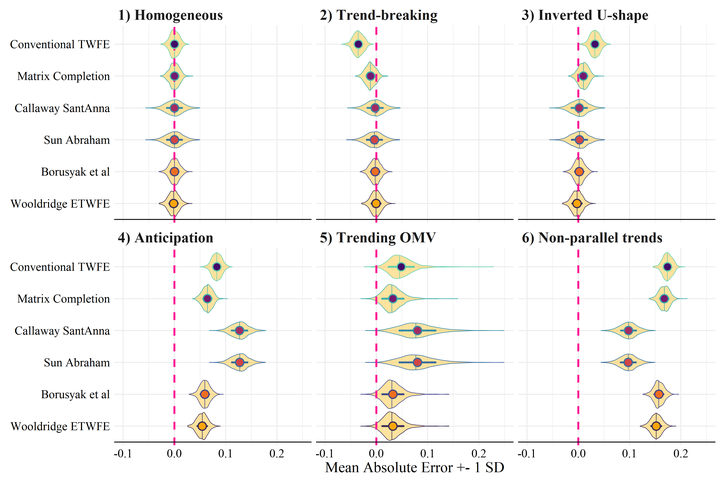When Can We Use Two-Way Fixed-Effects (TWFE): A Comparison of TWFE and Novel Dynamic Difference-in-Differences Estimators

Abstract
The conventional Two-Way Fixed-Effects (TWFE) estimator has been under strain lately. Recent literature has revealed potential shortcomings of TWFE when the treatment effects are heterogeneous. Scholars have developed new advanced dynamic Difference-in-Differences (DiD) estimators to tackle these potential shortcomings. However, confusion remains in applied research as to when the conventional TWFE is biased and what issues the novel estimators can and cannot address. In this study, we first provide an intuitive explanation of the problems of TWFE and elucidate the key features of the novel alternative DiD estimators. We then systematically demonstrate the conditions under which the conventional TWFE is inconsistent. We employ Monte Carlo simulations to assess the performance of dynamic DiD estimators under violations of key assumptions, which likely happens in applied cases. While the new dynamic DiD estimators offer notable advantages in capturing heterogeneous treatment effects, we show that the conventional TWFE performs generally well if the model specifies an event-time function. All estimators are equally sensitive to violations of the parallel trends assumption, anticipation effects or violations of time-varying exogeneity. Despite their advantages, the new dynamic DiD estimators tackle a very specific problem and they do not serve as a universal remedy for violations of the most critical assumptions. We finally derive, based on our simulations, recommendations for how and when to use TWFE and the new DiD estimators in applied research.